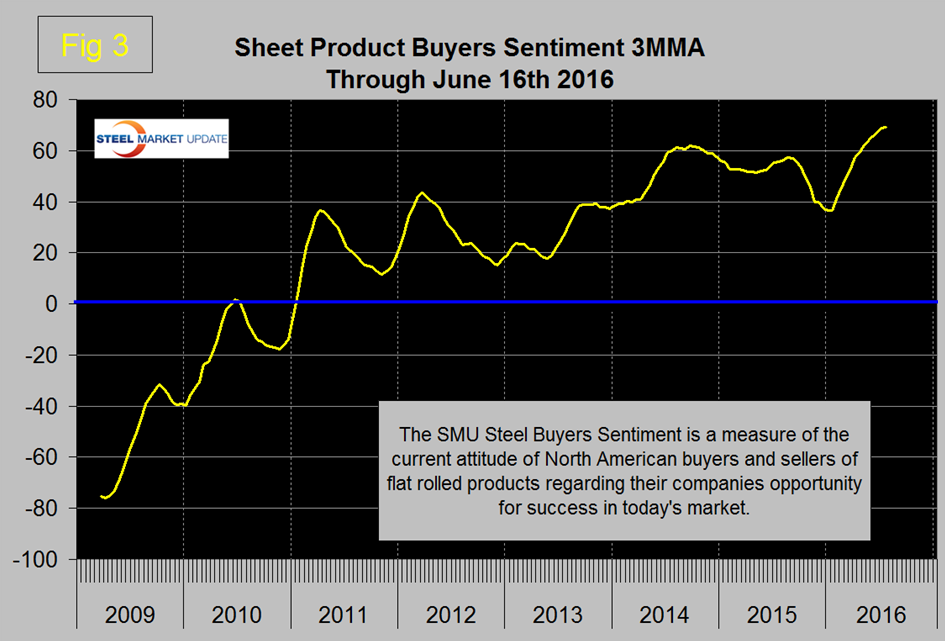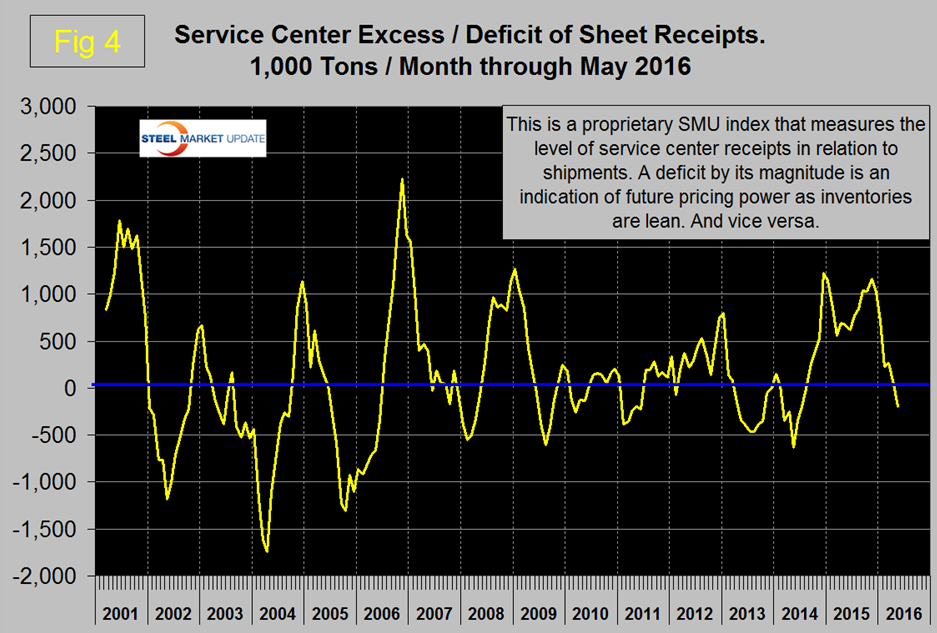Market Data

June 30, 2016
Key Market Indicators - June 30, 2016
Written by Peter Wright
This Key Markets Indicator report is something we produce for our Premium level clients. However, we thought that our Executive level readers would appreciate knowing…
An explanation of the Key Indicators concept is given at the end of this piece for those readers who are unfamiliar with it.
![]() The total number of indicators considered in this analysis is currently 36.
The total number of indicators considered in this analysis is currently 36.
Please refer to Table 1 for the view of the present situation and the quantitative measure of trends. Readers should regard the color codes in the present situation column as a quick look at the current market condition. The “Trend” columns of Table 1, are also color coded to give a quick visual appreciation of the direction in which the market is headed. All data included in this table was released in June, the month or specific date to which the data refers is shown in the second column from the far right and all data is the latest available as of June 30th.
Present Situation
There was no change in the net number of positive, negative or neutral indicators since we last published on May 31st though there were several changes in the detail. Our intent in using the word neutral is to say that this indicator is considered to be in the mid-range of historical data. The Chicago Fed National Activity Index was downgraded from neutral to negative when the three month moving average (3MMA) of its value fell below negative 0.25. The price of zinc was upgraded from negative to neutral as it rose above 95 cents per pound. Shipments of flat rolled products were upgraded from negative to neutral when the volume exceeded 15 million tons in three months through April which was the latest month for which data is available. There were no changes to the present situation of either construction or manufacturing indicators. We currently regard 6 of the 36 indicators to be positive, 16 to be neutral and 14 to be negative on a historical basis. The present situation of the general economy is considered to be neutral to weak with no indicators classified as strong. This week in its third iteration, GDP in Q1 was revised up from the first and second estimates (note the growth of GDP in this report is Y/Y not Q/Q as is the normal and misleading way of reporting). The SMU proprietary indexes are both historically strong. All the raw materials prices with the exception of zinc currently have a negative present situation. Shipments and supply of long products through May based on SMA data look similar to flat rolled through April based on AISI data (AISI reports lag the SMA).
Figure 1 shows the change in our assessment of the present situation since January 2010 on a percentage basis.
The number of indicators classified as positive peaked at 47.2 percent in October 2014 and steadily declined to 11.1 percent in the three months through last December. By May 31st the positives had risen to 17.6 percent then declined slightly to 16.7 percent on June 30th. Through the course of 2015 there was not much change in the number of indicators that we considered to be historically negative, what happened was that the decline in the positive indicators occurred as a shift to neutral. We currently still have a ho-hum present situation that has plenty of room for improvement. The real point is, “Which way is it going.”
Trends
The proportion of indicators trending positive through June 30th was 61.1 percent with 36.1 percent trending negative and one indicator unchanged. There has been a surge in positives since December when only 44.4 percent of indicators were trending positive. Most values in the trends columns are three month moving averages (3MMA) to smooth out what can be very erratic monthly data. Figure 2 shows the trend of the trends.
In October 2014 the proportion trending positive was 80.6 percent which coincided with the highest month of total steel supply since the recession. There was a steady deterioration through 2015. At the end of 2015 the proportion trending positive fell below 50 percent for the first time since March and April 2013. Figure 2 shows the pre-recession situation at the far left of the chart. In August 2008 over 2/3 (69.2 percent) of our indicators were trending negative and the steel market crashed in September of that year.
Changes in the individual sectors since our last update on May 31st are described below. (Please note in most cases this is not June data but data that was released in June through the 30th for previous months.)
In the general economy, the direction of the Conference Board Consumer Confidence Index trended positive for the first time since our March update. The US dollar reversed course and strengthened in May which we regard as a negative trend because of its effect on net imports. Both of the Steel Market Update proprietary indices have been trending positive since our December 31st update. The SMU buyer’s sentiment index at 69.0 in Mid-June was an all-time high since its inception in 2009 as shown in Figure 3.
The calculation of service center excess inventory of sheet products has declined from over a million tons in the last four months of 2015 to a deficit of 197,000 tons in May. A high excess is indicative of low pricing power therefore we regard this trend as extremely positive (Figure 4).
In the raw materials price section all were trending positive in May but in June Chicago shredded and iron ore took a step back with price declines. Zinc made a particularly strong upward move in June (see our raw materials price article published this week.)
In the long product section there were no changes in the direction of trends which were positive except for service center shipments and the rebar import price. In the flat rolled section net imports reversed course and trended positive through April (the latest month for which this can be calculated.) In the construction section all indicators continued to flash green. This contrasts with manufacturing where three of five indicators are now in retreat. In the April manufacturing employment date there was a reversal to contraction for the first time since February 2010 and this continued through May.
Trends in the June data continue to be encouraging though they retreated from the May releases. This series is relatively stable therefore based on the data for the first six months of 2016 we conclude that the improvement over last year is for real and that a positive shift in the market is occurring.
We believe a continued examination of both the present situation and direction is a valuable tool for corporate business planning.
Explanation: The point of this analysis is to give both a quick visual appreciation of the market situation and a detailed description for those who want to dig deeper. It describes where we are now and the direction in which the market is headed and is designed to give a snapshot of the market on a specific date. The chart is stacked vertically to separate the primary indicators of the general economy, of proprietary Steel Market Update indices, of raw material prices, of both flat rolled and long product market indicators and finally of construction and manufacturing indicators. The indicators are classified as leading, coincident or lagging as shown in the third column.
Columns in the chart are designed to differentiate between where the market is today and the direction in which it is headed. Our evaluation of the present situation is subjectively based on our opinion of the historical value of each indicator. There is nothing subjective about the trends section which provides the latest facts available on the date of publication. It is quite possible for the present situation to be predominantly red and trends to be predominantly green and vice versa depending on the overall situation and direction of the market. The present situation is sub-divided into, below the historical norm (-) (OK), and above the historical norm (+). The “Values” section of the chart is a quantitative definition of the market’s direction. In most cases values are three month moving averages to eliminate noise. In cases where seasonality is an issue, the evaluation of market direction is made on a year over year comparison to eliminate this effect. Where seasonality is not an issue concurrent periods are compared. The date of the latest data is identified in the third values column. Values will always be current as of the date of publication. Finally the far right column quantifies the trend as a percentage or numerical change with color code classification to indicate positive or negative direction.












